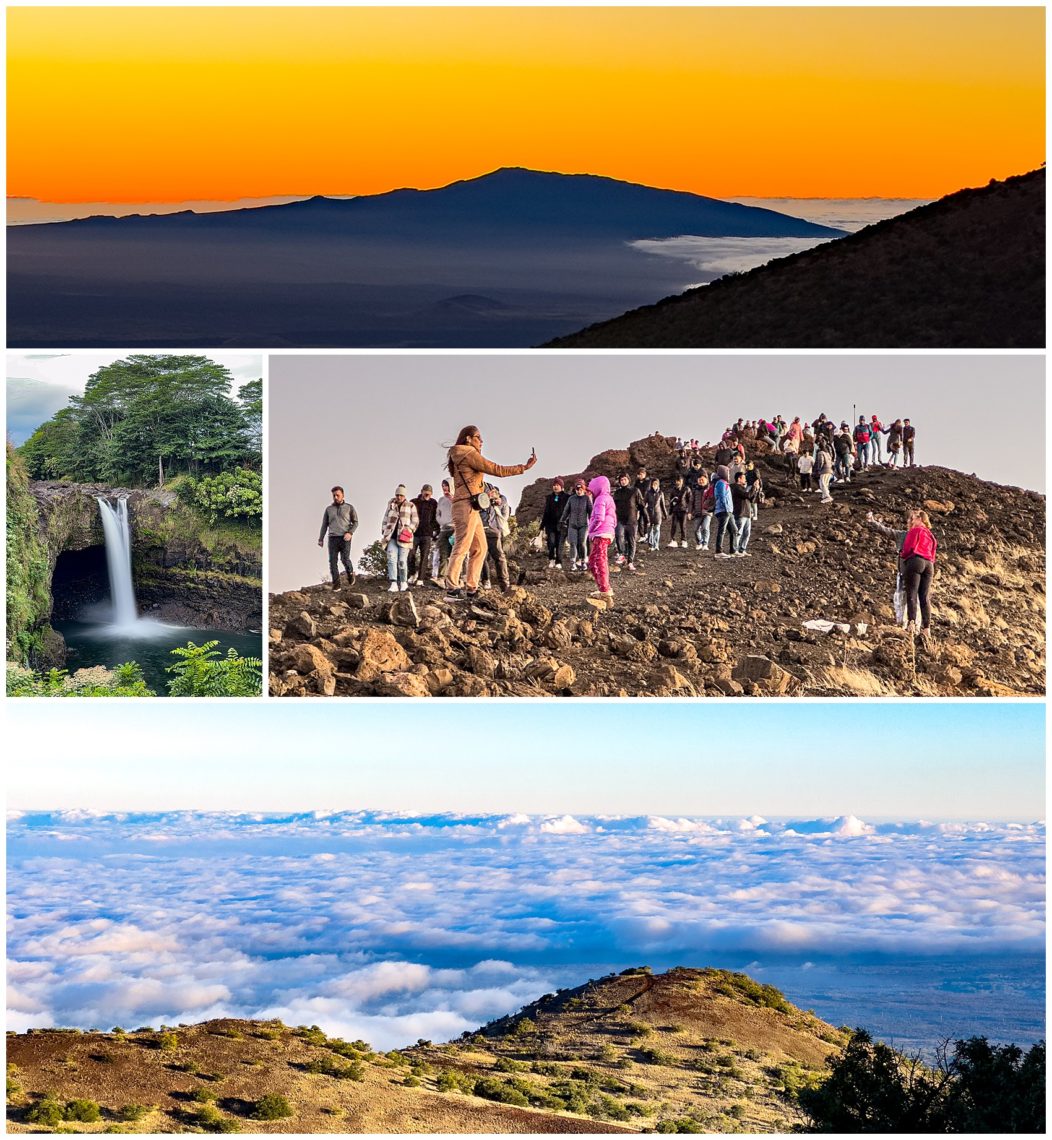
Sunset at Mauna Kea, across the road from the Visitor’s Center. At 9200 feet, the cloud layer is below us, so you often can get a clear view of the sun setting. The road to the summit was closed again (this was our second attempt at going there), so we settled with this view.

View of the Kilauea Volcano at Volcano National Park. Many times, we were only 50′ from the rim yet could not see the crater due to the terrible weather. Our friend, Kris, recommended staying at the Volcano House, located right at the rim of the Kilauea volcano, which last erupted from September 10-16, 2023. Both Mauna Loa and Kilauea tends to erupt every 2-3 years, whereas Mauna Kea is dormant. We saw how quickly the landscape changed over a short period of time from clear skies to thick fog.

Our favorite sunset was at Lava Lava Beach Club in Waikoloa Village where the cloud formations enhanced the sunset. We witnessed a marriage proposal (she said yes!) and found turtles on the lava rock beach.

In downtown Hilo, we walked past the huge Banyan Tree (middle). Banyan trees are not native to Hawaii, but were brought by missionaries from India in 1873. They have now been established as common and symbolic feature in Hawaii. Hilo is also the capital of Hawaii County and the oldest city in the Hawaiian Islands. We drove to the viewpoint at Pololū Valley Lookout, which is the end of the road near Waimea (center bottom).

Finally, we were able to enjoy a sunset with color. Twice in the past week, we reached the Mauna Kea Summit Visitor’s Center only to find that the road to the summit was closed due to ice or wind.Two days prior to these images, the wind exceeded 100 mph. As a backup plan, our guide showed us where we could watch the sunset across the road from the Mauna Kea Visitors Center to get an unobstructed view of the sun setting. A large crowd descended from the hill right after the sun set (right middle). At 9,200′ elevation, this is typically above the clouds, and therefore good for sunset and sunrise. In 2023, tours to the summit closed for 4 months due to adverse weather conditions. Enroute from Hilo, we also stopped at Rainbow Falls (middle-left).

It’s hard to believe that you can use an iPhone to shoot photos of the stars and us in a single frame. Near Mauna Kea summit, we did some stargazing in one of the few areas in Hawaii with little light pollution.
“The County of Hawaii has one of the strictest dark sky ordinances in the world. Outdoor lighting on the Big Island of Hawaii is not allowed to have more than 2% Blue Light Content, which makes the Big Island an ideal location for star gazing.
Mauna Kea is located on the Big Island of Hawaii provides some of the most astounding stargazing and provides a clear view of the constellations, and some of the largest observatories are located here. We will return one summer when the core of the Milky Way is visible.